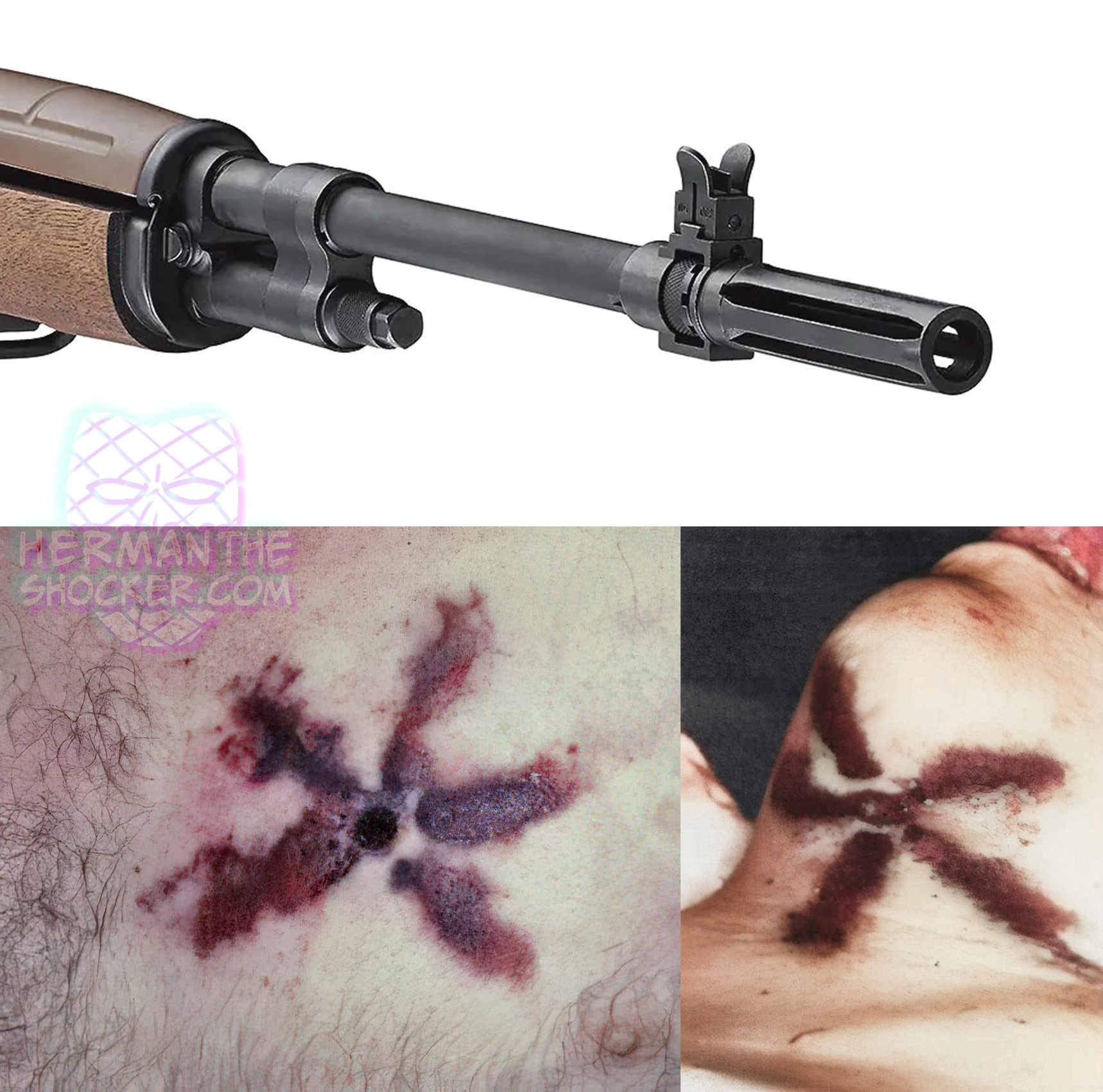Flash suppressors generally consist of a cylinder, having a number of longitudinal slits along its length that is attached to the muzzle of the weapon. On firing, the gas emerging from the muzzle is bled out the slits rather than emerging as one large cloud. Soot is present in this cloud of gas. If the muzzle of such a weapon is held in contact with the body, the flash suppressor will produce a distinctive pattern of seared, blackened zones around the entrance due to the emerging jets of hot gas. If fully formed, this results in an unusual flower-like pattern of soot and seared skin.
The number of slits will determine the number of petals to the flower and may give one an idea of the type of weapon used. Thus, for the M-14 with five slits in the flash suppressor, there are five petals to the flower pattern. The flash suppressor on the M-16A1 and AR-15 rifles initially had three slits, which was changed to six slits. The M-16A2, AR-15A2, and M-4 have a suppressor with five slits with the absence of the slit at the 6 o’clock position.
The skin underlying these linear deposits of soot is seared, with the soot often being baked into the skin. The flower pattern of the suppressor is more prominent when the wound is in an area of the body with loose skin that can enclose the suppressor. The petal pattern of a flash suppressor may be on the clothing rather than the skin.
Latest posts








